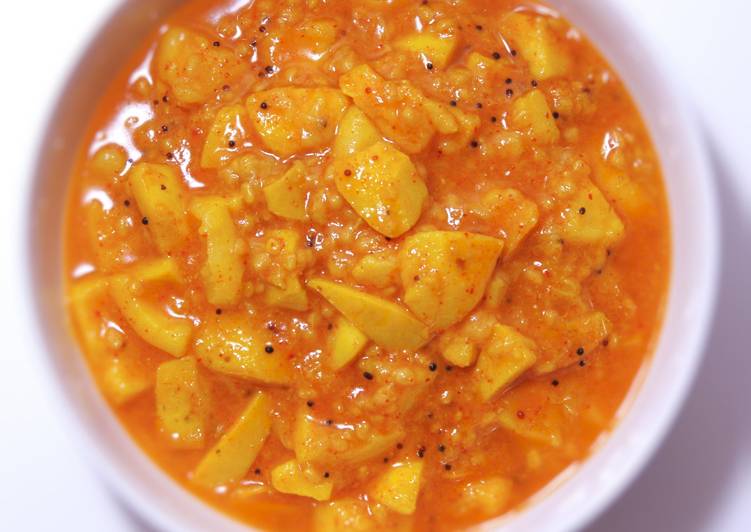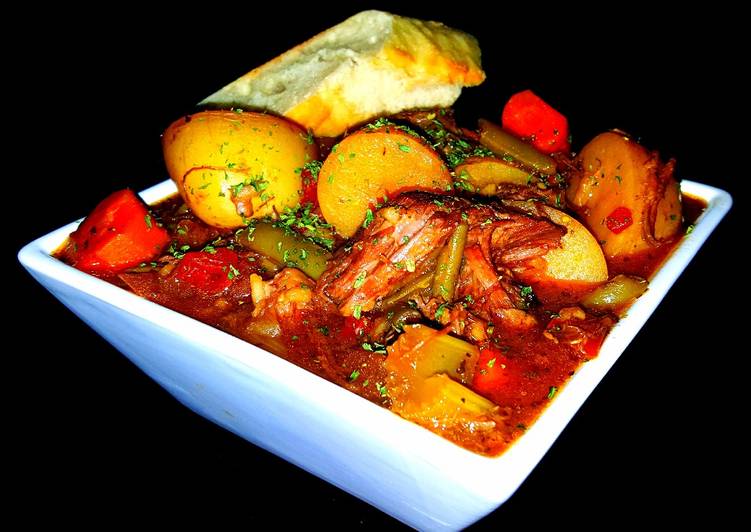
Hey everyone, it’s Louise, welcome to our recipe page. Today, we’re going to make a special dish, japanese soy cooked vegetables. One of my favorites. For mine, I will make it a little bit unique. This will be really delicious.
Japanese soy cooked vegetables is one of the most favored of recent trending foods in the world. It’s easy, it’s quick, it tastes delicious. It’s appreciated by millions every day. They’re nice and they look fantastic. Japanese soy cooked vegetables is something which I have loved my entire life.
See recipes for Japanese "Kinoko Takikomi Gohan" the Rice cooked with Soy Sauce and Mushrooms too. Japanese soy cooked vegetables I always cook stored vegetables in refrigerator with soy sauce and sugar. Aunty Eiko's international cuisine experience Japan Yokohama. Over the past several millennia Chinese, Japanese, and Korean artisans have mastered the craft of cultivating Aspergillus oryzae (called koji-kin in Japan) on grains, primarily rice and barley.
To get started with this recipe, we must prepare a few ingredients. You can cook japanese soy cooked vegetables using 13 ingredients and 8 steps. Here is how you cook it.
The ingredients needed to make Japanese soy cooked vegetables:
- Get 1 large dried Shiitake mushroom
- Make ready 10 cm Kombu (kelp)
- Get 50 g carrot
- Get 80 g Gobou
- Prepare 1 Aburaage (thin deep fried tofu)
- Prepare 1 Satsumaage (25g)
- Make ready 80 g Renkon
- Take 100 g boiled peas with seaweed (1 pack)
- Prepare 1 tablespoon sugar
- Get 1 tablespoon Sake
- Prepare 1 tablespoon Mirin
- Get 1 tablespoon soy sauce
- Make ready 1 tablespoon Dashi powder
You can use the leftover water for cooking. It's important to add the vegetables after the water is completely boiling. Daikon or daikon radish is a mild-flavored winter radish. Raw daikon is frequently pickled or grated and mixed into ponzu, a soy-citrus sauce.
Instructions to make Japanese soy cooked vegetables:
- Soak dried Shiitake mushroom and Kombu in 1 cup water
- This is Renkon, lotus root.
- This is Aburaage
- This is Satsumaage
- Cut all finely
- This is boiled beans and seaweed.
- Put Shiitake Kombu water in pot and cook all the ingredients with seasoning for 15 minutes low heat
- Garnish with sesame
Daikon or daikon radish is a mild-flavored winter radish. Raw daikon is frequently pickled or grated and mixed into ponzu, a soy-citrus sauce. It is also cooked, shredded, and dried. Crispy when raw, and tender when cooked, this Japanese root vegetable has a milder taste than some other types of radishes. This versatile Japanese vegetable can be prepared in a variety of ways.
Turn to Food to Improve Your Mood
For the most part, people have been taught to believe that “comfort” foods are terrible for the body and need to be avoided. Often, if your comfort food is candy or some other junk food, this holds true. Otherwise, comfort foods may be extremely nourishing and good for you. There are a number of foods that, when you consume them, can boost your mood. If you feel a little bit down and you need a happiness pick me up, try some of these.
Eggs, believe it or not, can be actually terrific at beating back depression. Just be sure that you do not throw out the egg yolk. The yolk is the part of the egg that matters most in terms of helping raise your mood. Eggs, specifically the yolks, are loaded with B vitamins. The B vitamin family can be great for boosting your mood. This is because they help in improving the function of your neural transmitters, the parts of your brain that dictate your mood. Eat an egg and be happy!
Make a trail mix out of seeds and/or nuts. Your mood can be raised by eating peanuts, almonds, cashews, sunflower seeds, pumpkin seeds, etcetera. This is because seeds and nuts have plenty of magnesium which raises your brain’s serotonin levels. Serotonin is the “feel good” chemical that directs your brain how you feel day in and day out. The more of it in your brain, the more pleasant you’ll feel. Not just that, nuts, in particular, are a great source of protein.
Cold water fish are good if you wish to feel better. Tuna, trout, mackerel, herring and wild salmon are all rich in omega-3 fatty acids and DHA. Omega-3 fatty acids and DHA are two things that raise the quality and the function of your brain’s grey matter. It’s true: eating a tuna fish sandwich can really help you overcome depression.
Grains can be excellent for fighting a bad mood. Quinoa, millet, teff and barley are all really great for helping increase your happiness levels. These foods fill you up better and that can help elevate your moods also. Feeling hungry can be a real downer! The reason these grains help your mood so much is that they are not hard for your body to digest. You digest these grains faster than other things which can help increase your blood sugar levels, which, in turn, helps make you feel better, mood wise.
Green tea is actually great for your mood. You knew it had to be mentioned in this article, right? Green tea is loaded with an amino acid called L-theanine. Research has discovered that this amino acid stimulates the production of brain waves. This helps focus your mental energy while simultaneously making the rest of your body more relaxed. You likely already knew it is not hard to be healthy when you drink green tea. And now you know it can help you be happier as well!
You can see, you don’t need junk food or foods that are not good for you so you can feel better! Test out these suggestions instead!


